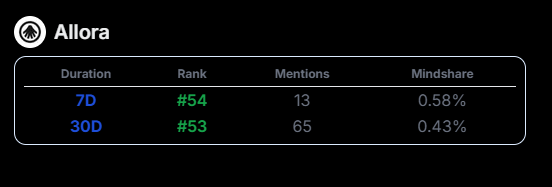The Evolution of Financial Forecasting
Financial forecasting has come a long way from the days of manual calculations and simple spreadsheet models. The journey has been marked by technological advancements that have steadily increased the sophistication and accuracy of predictive tools. Today, artificial intelligence (AI) stands at the pinnacle of this evolution, offering unparalleled precision and efficiency in financial forecasting and market analysis.
In the early days, financial analysts relied heavily on historical data and manual interpretation. This method was time-consuming and often prone to human error. The advent of computers brought about a significant shift, enabling the use of more complex algorithms and statistical models. However, it is the integration of AI that has truly revolutionized the field.
AI-powered models, such as those developed by AlloraNetwork, utilize sophisticated algorithms to predict market trends in both cryptocurrency and traditional financial markets. These models can analyze vast amounts of data, identifying patterns and trends that human analysts might overlook. This capability is particularly valuable in the fast-paced world of finance, where even minor market shifts can have significant impacts.
The Impact of AI on Market Analysis
Enhanced Accuracy
One of the most significant advantages of AI in market analysis is its ability to process and analyze large datasets quickly and accurately. Traditional methods often fall short in this regard, relying on historical data and manual interpretation, which can be both time-consuming and error-prone. AI, on the other hand, can analyze real-time data, providing more accurate and up-to-date predictions.
For instance, AlloraNetwork’s AI models can predict market trends with a high degree of accuracy, helping users make informed decisions. This enhanced accuracy is particularly valuable in volatile markets, where rapid changes can occur. By leveraging AI, traders and investors can gain a competitive edge, making more precise and timely decisions.
Speed and Efficiency
The speed at which AI models can process information is another critical advantage. In financial markets, timing is everything, and AI’s ability to identify trends and patterns in real-time allows for quicker decision-making and more effective trading strategies. This speed is essential for capitalizing on market opportunities and mitigating risks.
Adaptability
AI models are also highly adaptable, capable of learning from new data and adjusting their predictions accordingly. This dynamic approach to market analysis is far more responsive to changing market conditions than traditional methods. As markets evolve, AI can adapt, providing a more reliable and accurate forecasting tool.
Real-World Applications
Cryptocurrency Markets
The cryptocurrency market is particularly well-suited to AI-driven analysis due to its volatility and the vast amount of data involved. Projects like Irys & Kaito PUSH are actively involved in the Kaito Yaps ecosystem, providing community members with opportunities to showcase their knowledge and be rewarded for their contributions to cryptocurrency discussions and analysis.
The Currency Analytics offers detailed price analyses, such as the recent breakout above a long-term pattern in Dogecoin, which could drive a major rally. This kind of analysis is crucial for traders looking to capitalize on market movements. By leveraging AI, these analyses can be conducted with greater accuracy and speed, providing traders with a significant advantage.
Traditional Financial Markets
In traditional financial markets, AI is also making a substantial impact. AstralX provides in-depth analyses of Federal Reserve dynamics and ETF funds flow, helping investors understand the broader economic context in which they are operating. This kind of analysis is essential for making informed investment decisions, and AI can enhance it by providing more accurate and timely insights.
The Future of AI in Finance
Continued Innovation
As AI technology continues to advance, its role in financial forecasting and market analysis is likely to become even more significant. New algorithms and models are constantly being developed, offering even greater accuracy and efficiency. The future of AI in finance is bright, with the potential to revolutionize the way we approach market analysis and forecasting.
Ethical Considerations
However, the increased use of AI in finance also raises ethical considerations. Issues such as data privacy, algorithmic bias, and the potential for market manipulation need to be addressed. It is crucial that AI is used responsibly and ethically, ensuring that it benefits all market participants. As AI becomes more integrated into financial systems, it is essential to establish guidelines and regulations to prevent misuse.
Education and Awareness
As AI becomes more prevalent in finance, there is a need for increased education and awareness. Traders and investors need to understand how AI works and how it can be used effectively. This will help them make better-informed decisions and avoid potential pitfalls. Education and awareness are key to harnessing the full potential of AI in finance.
Conclusion: Embracing the AI Revolution
The role of AI in financial forecasting and market analysis is undeniable. Its ability to process large amounts of data quickly and accurately, adapt to changing market conditions, and provide enhanced accuracy makes it an invaluable tool for traders and investors. As AI continues to evolve, it will play an even more significant role in shaping the future of finance.
However, it is essential to approach this revolution with caution. Ethical considerations and the need for education and awareness are crucial. By embracing AI responsibly, we can harness its power to create a more efficient, accurate, and fair financial system. The future of finance is AI-driven, and those who adapt and innovate will reap the benefits.











